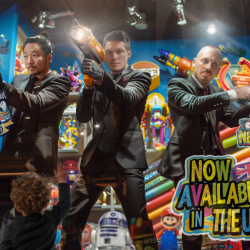The way we interact with each other, and form tribes, has radically changed through the digitalisation of our lives. We are hyper-connected yet also isolated; inherently wanting more intimacy, identity, and the feeling that we belong, in a world that feels more detached.
The rise of Web 3.0 is enabling a new form of tribal connection. It allows us to fragment and express our identity in ways we can’t in the real world, creating greater fluidity in how we seek out connection and with increasing nuance. It’s in this new world of possibilities that people look for their tribes, and where brands seek to facilitate it, hoping to foster greater advocacy through community.
Today we see people from all demographics inhabit a single space online. Yet it’s our personal expressions that lead to building communities. Facebook’s Horizon Worlds encourages its players to create extraordinary realms from their imagination, which can then host other players to explore and virtually hang out. Ultimately the brand hosts the platform, but it facilitates self-expression as a means of finding or attracting your crowd.
Genies, likewise, wants us to nourish the mind to tailor our social encounters. They offer users over a million customisation combinations to personalise avatars, both in Genies’ ecosystem, and across multiple social apps. Here we can morph our identities to a range of scenarios, and endlessly, as we see fit. However, Genies’ collaboration with Gucci signified importance of how we’re seen by others. The partnership offered digital apparel, plus pledge, to a brand and tribe that realistically for many would be unattainable.

Brands can also host platforms for multi-interest tribes. As a lifestyle brand, Peloton’s ‘Artist Series’ offered fans official sound-tracked sessions to work out to. Riders can join classes with others who share their musical tastes, developing a community mindset where interests in exercise and culture collide. A powerful element of the communities created around the Peloton brand are that many are now being created by users themselves.
An example of this is ‘Black Girl Magic: The Peloton Edition’, founded by Courtney Snowden. Now consisting of over 30,000 users, she shares her experience as a Black woman on a fitness journey. #BGM became a focused, safe space for her and others to discuss life — on and off the bike.
Awarding community members a sense of ownership spurs endorsement beyond pre-defined areas
The third web now offers communities direct shareholding, exclusive access, and unique assets that set them apart. Billie Eilish is a great example. Her recent move into the metaverse includes NFTs, virtual currencies and collectibles that can be used across virtual worlds. A way to equip fans with digital badges of recognition, making it easier to find one another within the intricacies of the web.
Roblox Vans World offers similar transactions to take place. It features playable skate parks and stores that let players customise and purchase digital brand apparel. Most of which can be worn elsewhere on the Roblox platform and in real-life, are available from Vans’ e-commerce site. A chance to connect your virtual and physical selves. Moreover, real-world hangouts inspired online visuals, ensuring the immersive brandscape makes players feel at home. Places with a sense of authenticity, where all tribe members can assemble.
Our hyper-fragmented digital identities enable us to seek out ever-more niche communities and connect with like-minded people across a myriad of platforms. We can argue that the digitisation of our personal interactions doesn’t necessarily make it harder to find our tribes, but that our attachments have become more transient.
Brands offer assets and platforms that fix our allegiances and identify us to others. However, successful attempts at creating this rely on authenticity. Tribal connections must feel real, meaningful and inclusive. Tribes are not passive entities — they live and evolve with the people in them. The most successful examples of community building create a space for self-expression and involvement. While the digital world enables this on entirely new levels, brands will need to always embed these fundamental needs into their strategy. The way we seek out our tribes has evolved immeasurably; the reasons we value them remain unchanged.
Featured image: Sketch / YouTube


























